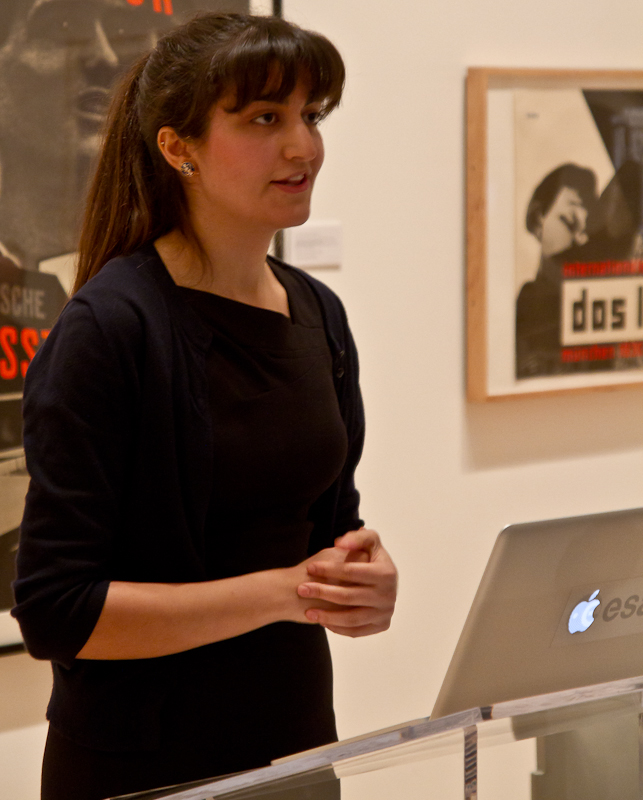
Helia Sharif is an out-of-the box thinker.
The second-year master’s in aerospace and mechanical engineering student talked space robots and showcased her research interests with a group of over 50 people at the third instalment of the Carleton University Art Gallery’s (CUAG) Double Major series.
“I am always interested in reaching out to different communities and learning how we can collaborate together to come up with a new idea that maybe has never been done before and never been thought,” she said.
“The crazier the idea, the more interesting it is.”
Each instalment takes two speakers from very different disciplines and each speaks for 20 minutes followed by an audience participation segment.
Janak Alford, who specializes in urban hacking, joined Sharif for the Double Major series.
Urban hacking is all about thinking differently about a city, Alford said. Light shows on the side of buildings, to impromptu merry-go-rounds in city centres are all examples of urban hacking.
He said his art is all about combining “storytelling” with “layering.”
While the two disciplines – one more mathematically inclined, the other more artistic – don’t seem to intersect very well, Sharif said Alford’s work requires him to think like an engineer often, just as hers requires her to have an artistic sensibility.
“If there was no creativity, for me at least, I would definitely get bored of doing the same mundane things and move on to something else,” she said.
Sharif said she has always had a creative flair.
When she was young, she wanted to become a music conductor, but decided to switch to engineering as she became more interested in space.
However, creative thinking is still driving Sharif forward in her vision for the future of humankind and space.
“I see an environment where humans can have a much, much easier lifestyle and an enhanced lifestyle,” she said.
“Robots can do all the heavy duty lifting and all of the mundane work and humans can just live in leisure.”
For now, Sharif is working on making Mars rovers, like the one called “Curiosity,” more autonomous.
She is currently designing autonomous space robots that will change how the next generation of planetary exploration rovers will process and communicate information.
The challenges of making robots more “human-friendly” is of particular interest.
“It’s very important that this giant robot is not just a little box that talks out of its little holes and a voice comes out,” she said.
Working with a communication delay between Earth and Mars of up to 30 minutes each way (an hour in total), can be difficult for Mission Control to overcome, Sharif said.
She also said that social media could play an important role.
For now, each Mars rover has its own Facebook and Twitter account meant to engage the public.
Sharif says she sees this going much further.
“If the robots could actually tweet back and forth with not only mission control but also the astronauts and communicate more efficiently and more effectively, saying ‘I’m about to get this piece of rock’ and the astronaut would say ‘ah, no. We already have too many of these. Go ahead and grab the other one next to it or move onto the next part and let me know how you’re doing.’ That way they could not only communicate with each other but also let the rest of the community engage,” she said.
While Sharif is confined to the ground for now, she said she hopes to one day go into space.
There is an effort to have a human colony on Mars by 2023, she said. The catch, though, is it’s a one-way ticket.
That doesn’t phase Sharif though. When asked if she would go by an audience member, she answered quickly.
“Absolutely, yes. In a heartbeat.”





